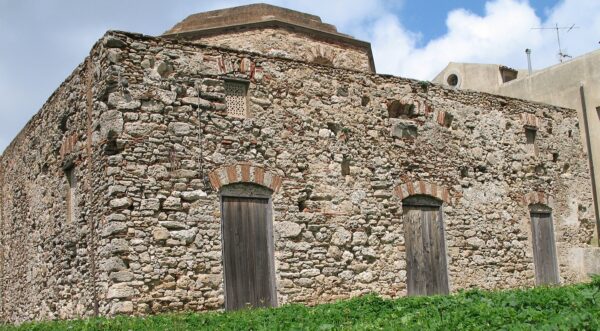Cerei church and monastery
Certainly the oldest monument in Rometta is the church of Gesù and Maria, formerly called Santa Maria della Candelora (or dei Cerei), dating back to the centuries of Byzantine domination, between the XNUMXth and XNUMXth centuries.
At the end of the 1320th century, a convent of nuns was established near this church, having moved from the Milazzo plain where it had the title of Santa Maria di Basicò. In 1345 the nuns obtained papal approval for their transfer to Rometta, but in 1871, through the intercession of Queen Elizabeth of Aragon, they moved to Messina. It is not known which rule they originally followed, but from the moment they moved to Messina they professed that of Santa Chiara. The church of Rometta apparently remained the patronage of that Messina monastery until 1857 and it seems that in XNUMX the ruins of the convent still existed near it.
The Byzantine church of Rometta stands on a square structure, which gives the exterior the appearance of a parallelepiped mass surmounted by a polygonal drum, from which a depressed hemispherical dome emerges.
The four external walls were simply covered with plaster which, having partly detached, allows us to analyze the internal structure of the walls, formed mostly of limestone filled with scrap brick material, reinforced and adjusted in some points by stone material.
Unlike the walls, all the arches of the doors and windows, as well as the arches of the vaults and those on which the dome rests, are built with a structure of regular ashlars of hard stone alternating with groups of three bricks arranged like a knife.
As can also be seen, both inside and outside there are traces of later additions.
In the front facing south you can see the imprint of a door, now walled up, the layout of which is clearly drawn inside with a pointed arch built using yellow tuff ashlars; a lovely sixteenth-century exhibition, made of local freezing stone, then frames a small door, also walled up, on the external western wall.
The interior, once entirely frescoed, today features only a few remains of these masterpieces.
Source: https://web.archive.org/web/20090327200403/http://rometta.altervista.org/Arte%20e%20Cultura.html
Card insertion: Ignazio Caloggero
Information contributions: Web
Photo: Di Pinodario – PD, Public domain, https://commons.wikimedia.org/w/index.php?curid=46420232



